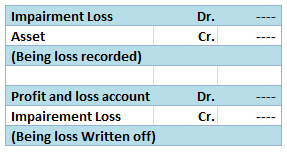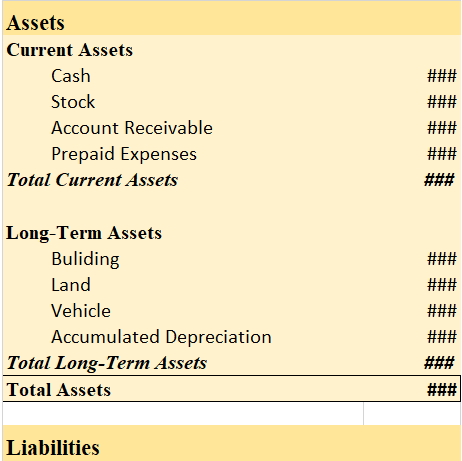Fictitious assets On seeing or hearing ‘fictitious’, the words which come to our mind are ‘not true, ‘fake’ or ‘fantasy’. So, fictitious assets are those items that appear on the assets side of the balance sheet but are actually not assets. In substance, fictitious assets are the expenses and lossesRead more
Fictitious assets
On seeing or hearing ‘fictitious’, the words which come to our mind are ‘not true, ‘fake’ or ‘fantasy’. So, fictitious assets are those items that appear on the assets side of the balance sheet but are actually not assets.
In substance, fictitious assets are the expenses and losses that are not completely written off in a financial year and are required to be carried forward to the next financial year.
The examples of fictitious assets are as follows:
- Deferred Advertisement expense
- Loss on the issue of debentures.
- Debit balance of Profit and Loss account ( Net loss )*
- Preliminary expenses.
Fictitious assets appear on the asset side of the balance sheet as expenses and losses have a debit balance.
*when the balance sheet is prepared as per Schedule III of Companies Act, the Net loss is shown as a negative figure under the head Reserve and Surplus.
Intangible Assets
Intangible assets mean the assets which don’t have any physical existence. They cannot be seen or touched but are assets because they do provide future economic benefits to the business. Like tangible assets (like machinery and building), they can be also created, purchased or sold.
Like tangible assets are depreciated, intangible assets are gradually written over by amortization over their useful lifespan to account for the economic benefits provided by them.
Following are the examples of intangible assets:
- Goodwill
- Brand name
- Trademark
- Patents
- Copyrights
Intangible assets which are created by the business-like goodwill or brand recognition do not appear in the balance sheet.
Only acquired intangible assets can be shown in the balance sheet. Like purchased goodwill, patents, trademarks etc.
Intangible assets also face impairment if their fair value is less than their carrying value after deducting amortization expense. The difference between carrying value and fair value is shown in the Profit and loss A/c as impairment charge and the asset is valued at fair value in the balance sheet.
See less












The term set off in English means to offset something against something else. It thereby refers to reducing the value of an item. In accounting terms, when a debtor can reduce the amount owed to a creditor by cancelling the amount owed by the creditor to the debtor, it is termed as set off. It is coRead more
The term set off in English means to offset something against something else. It thereby refers to reducing the value of an item. In accounting terms, when a debtor can reduce the amount owed to a creditor by cancelling the amount owed by the creditor to the debtor, it is termed as set off.
It is commonly used by banks where they seize the amount in a customer’s account to set off the amount of loan unpaid by the customer.
Types
There are various types of set-offs as given below:
Example
Let’s say Divya owes Rs 20,000 to Sherin for the purchase of goods. But, Sherin owed Rs 6,000 to Divya already for use of her Machinery. Therefore, the amount of 6,000 can be set off against the 20,000 owed to Sherin and hence Divya would effectively owe Sherin Rs 14,000.
This helps in reducing the number of transactions and unnecessary flow of cash.
See less